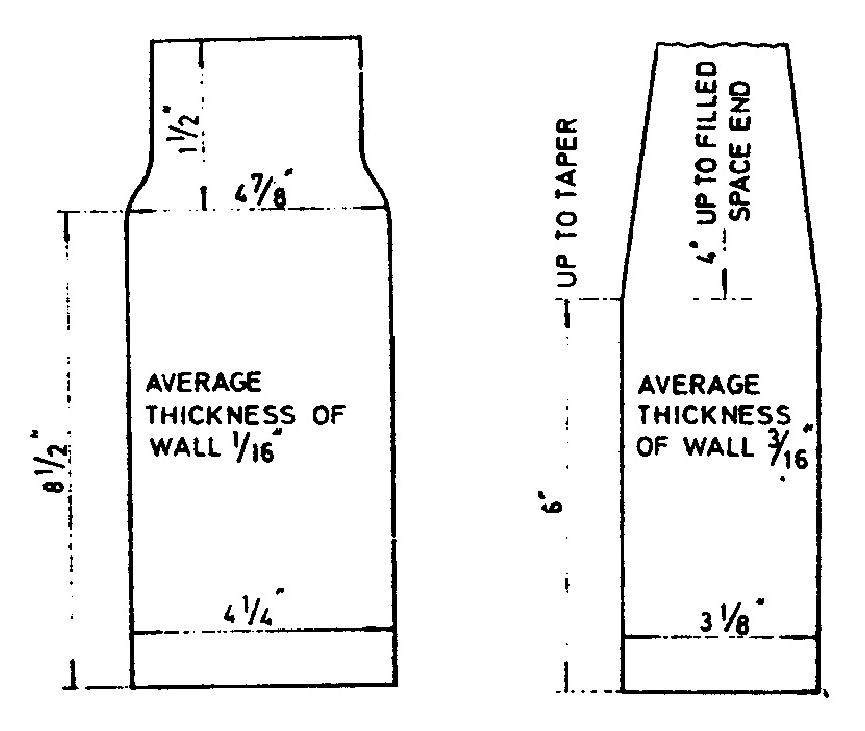
Nikola Tesla Books
Colorado Springs
July 31, 1899
Proposed condenser from Mantion Water quart bottles
Comparative test with sample bottles showed as follows:
Defl. 7 bottles Maniton average three readings 20.66â two old bottles â â â 19.7 } degrees on scale
In the first case the e.m.f. was 164 voltsâ â second â â â â 167 â } average values of three readings
One new bottle defl. $! {20.66 \over 7} $!. One old bottle defl. $! {19.7 \over 2} $!. Reduced to the same voltage one of the new bottles would have given 20.66/7 x 167/164 = 21/7 = 3 approx. This gives a ratio of capacity of one old bottle to new $! {{19.7 \over {2 \over 3}} = {19.7 \over 6} = 3.30} $! or approximately
$! {{\mathrm{new \, bottle} \over \mathrm{old \, bottle \, capacity}} = 0.3} $!.
Now we may have in one tank 39 new bottles whereas only 16 of the old bottles could go in. This will give the capacity of the new tank to that of the old as
$! {{{39 \times 0.3} \over 16} = {11.7 \over 16} = 0.731} $!.
Now mean diam. of cylindrical part of old jar outside = 4.5625". Now mean diam. of cylindrical new bottle jar outside = 3.125". Allowance for upper part on old jar 1 1/2" taken of same diam. as cylindrical or nearly cylindrical part.
Similar allowance for new bottle 8/3".
118
July 31
Tesla made the capacitors for primary circuit from mineral water bottles filled with a saturated solid salt solution. He then submerged several bottles in a metal tank filled with the same solution. By that method he obtained the capacitor groups with a common layer. Other layers (electrolyte in jars) could have been connected in parallel as desired. The least capacitance change of capacitor battery of this type amounted to exactly the capacitance of one jar. By performing the withstand tests on such capacitors at a frequency of 144 Hz he concluded that they could withstand even 30,000 volts when two series of them are connected in series. By so solving the capacitor problems in primary circuit, he returns again to the secondary circuit. In the secondary he hadn't yet solved the problem of coil distributed capacitance, in which he sees the main obstacle on the way of achievement of desirable high voltages. Tesla's analysis, somewhat strange for a reader of these days (sometimes even incorrect) as hosed on a limited number of facts, impressed with its breadth. Tesla deeply penetrates in physical processes, and attempts to understand what and how something happens. His experiments provide him with proofs for conclusions he came to on the basis of thinking and analysis of previous experiments.
By having a desire to design the secondary coil with minimal self-capacitance, and which will be able to operate at extraordinary high voltages, Tesla devoted his time, more than anybody else before him, to a study of coils. The results were not lacking (coil shapes, winding methods), but with all that Tesla was not satisfied. He thinks what would happen when he would add series capacitors, and what would happen if he could change the distance between windings, or the wire diameter, etc.


